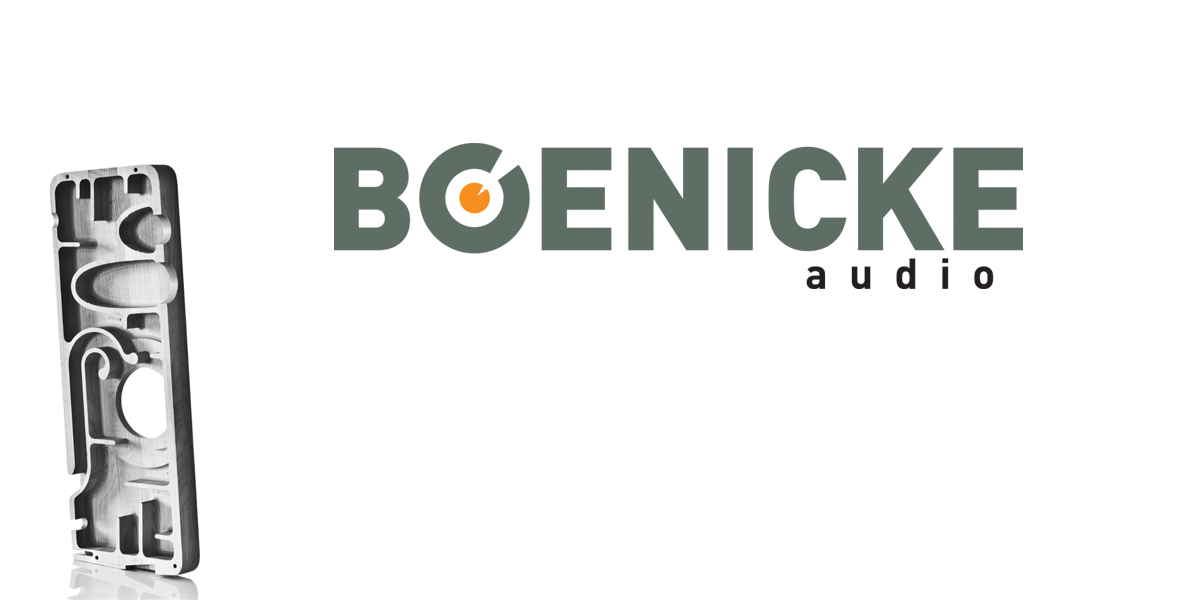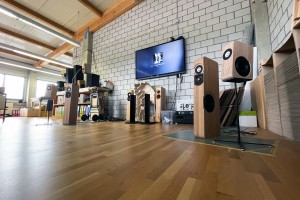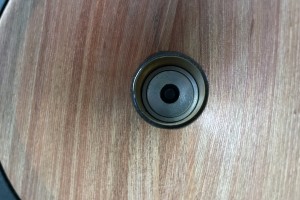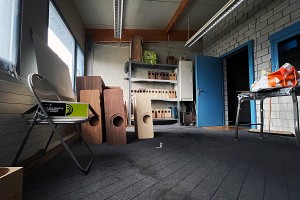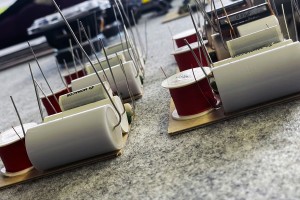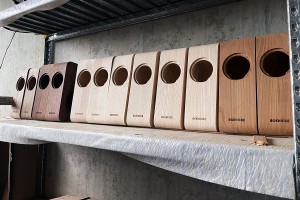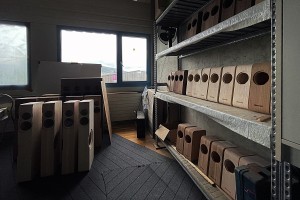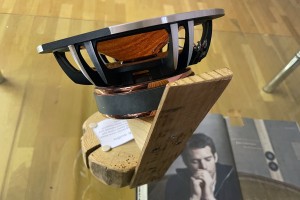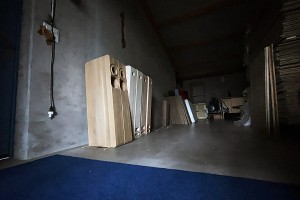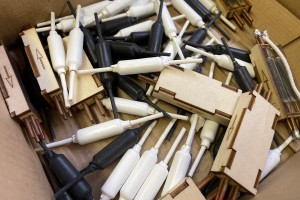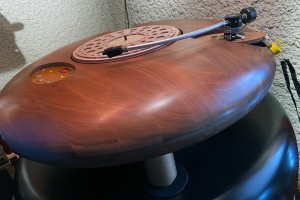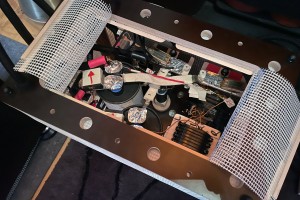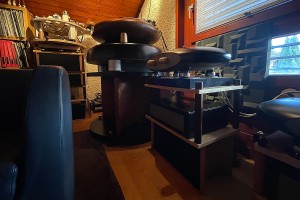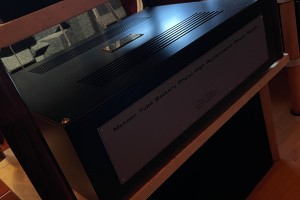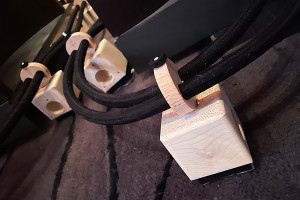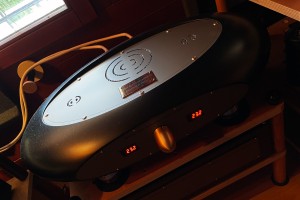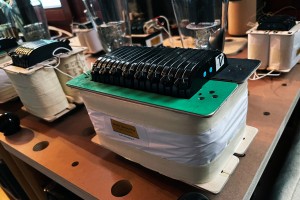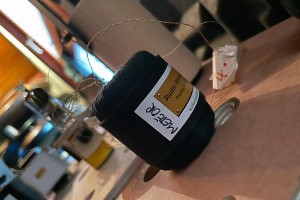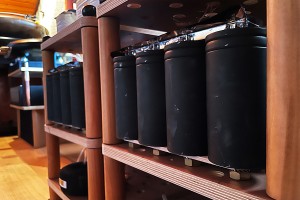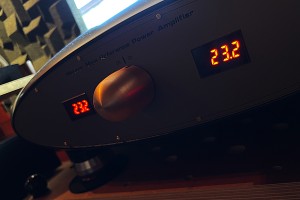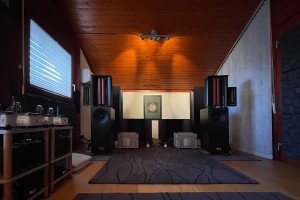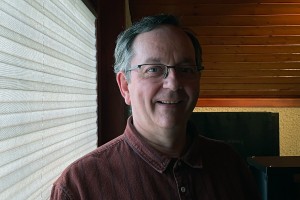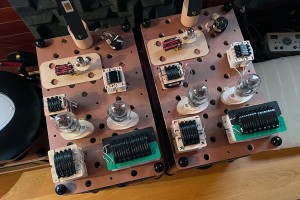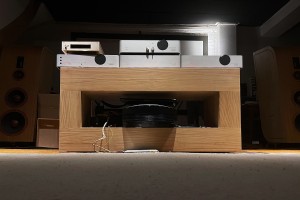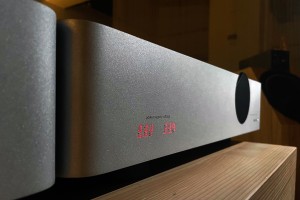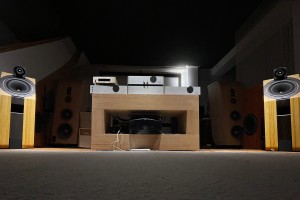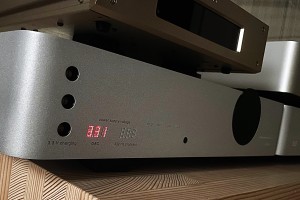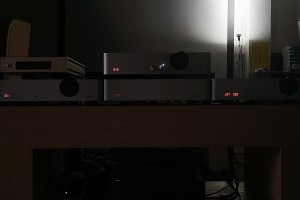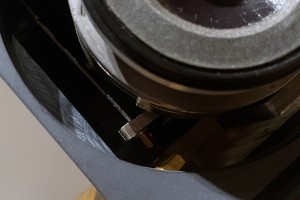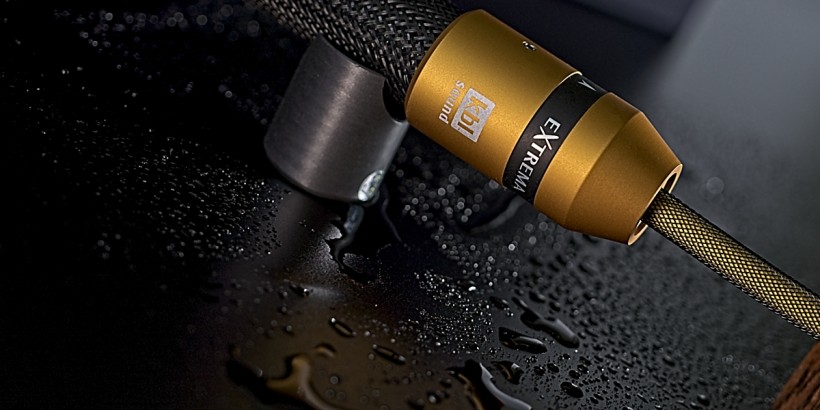Although comms with audio designers known for unusual hardware are essential for understanding why it is what it is, nothing beats seeing in person how this stuff is made. That kind of insight is as valuable as it is irreplaceable, so upon receiving the invitation from Boenicke Audio’s founder Sven I was all in. Now it’s time to share my findings.
Swiss made
I’ve been up to speed with Sven Boenicke’s work long before this site’s official launch in early 2016. Thus far I’ve reviewed nine his products and have been proudly using six: W11 SE+ floorstanders, W5 SE monitors, Power Gate outlet multiplier, ComDev kit, IC3 CG interconnects and S3 speaker cables. In the past I also had standard W8 and W5 models. All in all, that’s quite the track record. Unsurprisingly over the years Sven and I became friends. That’s only natural if for a decade or so you regularly talk to someone about common hobby essentially. Here one could say that press representatives shouldn’t develop such friendships, but that’s unrealistic. The audio biz tends to connect like-minded people who turned their passion for music and sound quality into a daily job. That’s why when Sven and I talk, neither of us feels that it’s work that we’re doing, even though that’s what we usually discuss. Lucky us. Prior to moving forward I encourage you to see this recent interview with Sven, done by the Alpha Audio channel on YouTube.com:
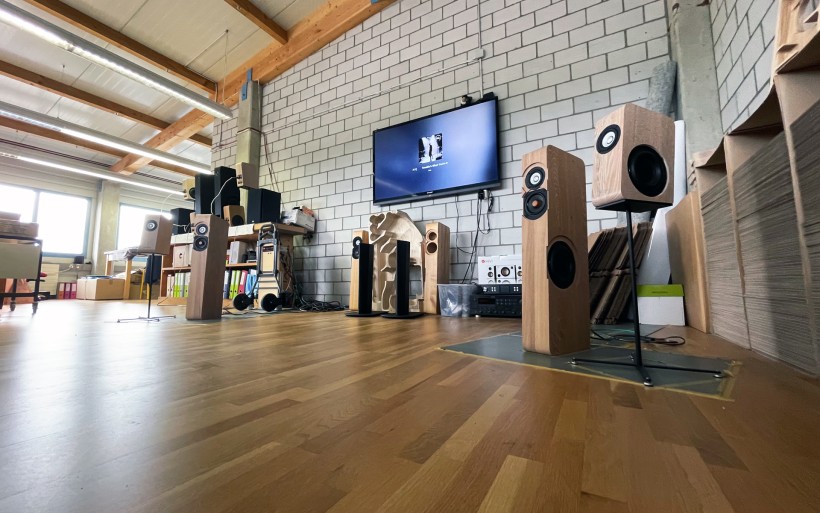 I’ve been keeping tabs on Boenicke Audio’s profile on social media, where shots from its Basel HQ were shown several times, so this place feels familiar even though I’ve never been there. In late October the opportunity to change that status quo had emerged. The Swiss invited me to come over for a weekend to chill, have a listen to several things and show me just the workshop where all his crazy ideas are born and magic happens. Although initially I had no plans for making any report from this visit, over two packed days I saw too much to keep that just for myself, so this publication eventually had to see the daylight. Apologies for shots nowhere near on par with those I usually provide. This time around a smartphone had to do all the heavy lifting and there was nothing much I could do about that.
I’ve been keeping tabs on Boenicke Audio’s profile on social media, where shots from its Basel HQ were shown several times, so this place feels familiar even though I’ve never been there. In late October the opportunity to change that status quo had emerged. The Swiss invited me to come over for a weekend to chill, have a listen to several things and show me just the workshop where all his crazy ideas are born and magic happens. Although initially I had no plans for making any report from this visit, over two packed days I saw too much to keep that just for myself, so this publication eventually had to see the daylight. Apologies for shots nowhere near on par with those I usually provide. This time around a smartphone had to do all the heavy lifting and there was nothing much I could do about that. The brutally early direct flight from Warsaw to Zurich took less than two hours. Boenicke Audio’s founder picked me up from there. Then he asked what I’d like to do and even kindly suggested that going to the hotel for a nap was an option. Over my dead body of course, but I appreciated the gesture. For once my schedule was enjoyably empty, so making it busy again was solely on Sven’s shoulders. He casually mentioned that he hadn’t seen his crew and manufacturing facility in a while. Bingo, instantly I was game. That’s how the picturesque town of Kaltenbach located some 50km from Zurich became our new destination. A large industrial building on the outskirts of this first stop housed several businesses, while Boenicke Audio being the largest occupied its entire top floor. I’m not sure how many square meters Sven’s operation had at its disposal there, but the place surely wasn’t small. The main hub area filled with multiple cardboards, paper inserts and woolen bags – hardly a surprise given how all Boenicke products are packed – branched out into several smaller rooms. The first adjacent lodging was just the place where the company’s carpenter Christoph Schranz prepares all wooden enclosures prior to installing components in them. Each Boenicke speaker comprises two mirrored enclosure halves delivered to the facility as rough CNC-milled bits. Christoph bonds and then processes these cabinets to make them smooth, nice and of high quality. Just to be clear, they really are. Modest dress code and luxurious feel are embedded in Boenicke Audio speakers as much as top assembly, high attention to details and superb honest finish.
The brutally early direct flight from Warsaw to Zurich took less than two hours. Boenicke Audio’s founder picked me up from there. Then he asked what I’d like to do and even kindly suggested that going to the hotel for a nap was an option. Over my dead body of course, but I appreciated the gesture. For once my schedule was enjoyably empty, so making it busy again was solely on Sven’s shoulders. He casually mentioned that he hadn’t seen his crew and manufacturing facility in a while. Bingo, instantly I was game. That’s how the picturesque town of Kaltenbach located some 50km from Zurich became our new destination. A large industrial building on the outskirts of this first stop housed several businesses, while Boenicke Audio being the largest occupied its entire top floor. I’m not sure how many square meters Sven’s operation had at its disposal there, but the place surely wasn’t small. The main hub area filled with multiple cardboards, paper inserts and woolen bags – hardly a surprise given how all Boenicke products are packed – branched out into several smaller rooms. The first adjacent lodging was just the place where the company’s carpenter Christoph Schranz prepares all wooden enclosures prior to installing components in them. Each Boenicke speaker comprises two mirrored enclosure halves delivered to the facility as rough CNC-milled bits. Christoph bonds and then processes these cabinets to make them smooth, nice and of high quality. Just to be clear, they really are. Modest dress code and luxurious feel are embedded in Boenicke Audio speakers as much as top assembly, high attention to details and superb honest finish.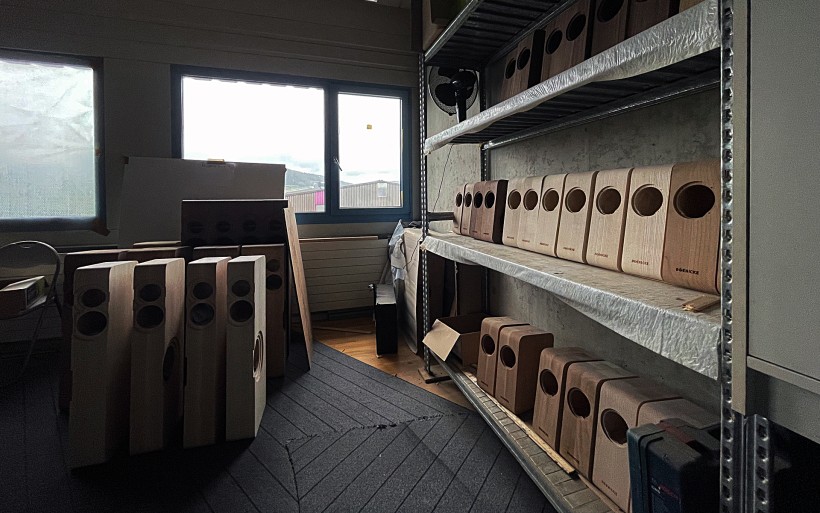 From Chirstoph’s kingdom we moved to the noticeably larger room where Paddy Hablützel reigns supreme. He’s responsible for assembling, QC and logistics, so his daily tasks include soldering crossovers, mounting drivers, connecting everything, burning in finished products plus packaging and sending them on their way to distributors. Considering how many already finished yet otherwise empty speaker cabinets I’ve seen in Christoph’s room, Paddy had his hands full too and the business was clearly booming. Then again, that’s what happens when you run a successful audio house that dates back to the late ‘90s. Interestingly, Sven has no aspirations to grow it into any larger than it already is, which at first had me surprised. He explained that he’s perfectly happy with what it is now. The man also enjoys the fact that his crew can maintain a healthy work-life balance, which is super important to him. If it ain’t broke, don’t fix it, that’s the clear motto at the Boenicke house. Besides, last time I checked being a boss who takes good care of his crew wasn’t a crime.
From Chirstoph’s kingdom we moved to the noticeably larger room where Paddy Hablützel reigns supreme. He’s responsible for assembling, QC and logistics, so his daily tasks include soldering crossovers, mounting drivers, connecting everything, burning in finished products plus packaging and sending them on their way to distributors. Considering how many already finished yet otherwise empty speaker cabinets I’ve seen in Christoph’s room, Paddy had his hands full too and the business was clearly booming. Then again, that’s what happens when you run a successful audio house that dates back to the late ‘90s. Interestingly, Sven has no aspirations to grow it into any larger than it already is, which at first had me surprised. He explained that he’s perfectly happy with what it is now. The man also enjoys the fact that his crew can maintain a healthy work-life balance, which is super important to him. If it ain’t broke, don’t fix it, that’s the clear motto at the Boenicke house. Besides, last time I checked being a boss who takes good care of his crew wasn’t a crime. Paddy’s room featured the usual sight in form of racks full of ready crossovers, drivers and all other parts necessary for speakers. It also included lots of exotics; large prohibitively expensive Duelund caps, autoformers, Quantum Bybee purifiers, resonators and LessLoss Firewalls plus C-MARC hookup wiring atop many other things best kept under wraps. One side of that area was the listening space, where the main setup featured an affordable inconspicuously compact class AB amp taken from… car audio. Sven said that this component powerful enough to drive his products well is a tremendous tone and color booster above all else. This finding has been used to evaluate finished speaker sets ever since Paddy who is a massive car audio enthusiast had discovered it. After listening for some two hours to W5 monitors on rotation with W8 floorstanders I admit that this kit did a very good job indeed. The last thing that piqued my interest was the statue of the company’s signature wideband transducer used in W11 and W13 models. Finally I got the chance to see how that driver’s milled basket, motor and voice coil looked like. Paddy also had in store a test for Sven and me. He wanted us to have a listen to two W5 types with a bit different crossover points and share with him our thoughts, so we did. Here it’s worth noting that Sven being the boss has the last vote, but he takes his crew’s feedback into account and Paddy’s contribution is actually extensive as far as speakers go. After that it was time to head back to Basel.
Paddy’s room featured the usual sight in form of racks full of ready crossovers, drivers and all other parts necessary for speakers. It also included lots of exotics; large prohibitively expensive Duelund caps, autoformers, Quantum Bybee purifiers, resonators and LessLoss Firewalls plus C-MARC hookup wiring atop many other things best kept under wraps. One side of that area was the listening space, where the main setup featured an affordable inconspicuously compact class AB amp taken from… car audio. Sven said that this component powerful enough to drive his products well is a tremendous tone and color booster above all else. This finding has been used to evaluate finished speaker sets ever since Paddy who is a massive car audio enthusiast had discovered it. After listening for some two hours to W5 monitors on rotation with W8 floorstanders I admit that this kit did a very good job indeed. The last thing that piqued my interest was the statue of the company’s signature wideband transducer used in W11 and W13 models. Finally I got the chance to see how that driver’s milled basket, motor and voice coil looked like. Paddy also had in store a test for Sven and me. He wanted us to have a listen to two W5 types with a bit different crossover points and share with him our thoughts, so we did. Here it’s worth noting that Sven being the boss has the last vote, but he takes his crew’s feedback into account and Paddy’s contribution is actually extensive as far as speakers go. After that it was time to head back to Basel.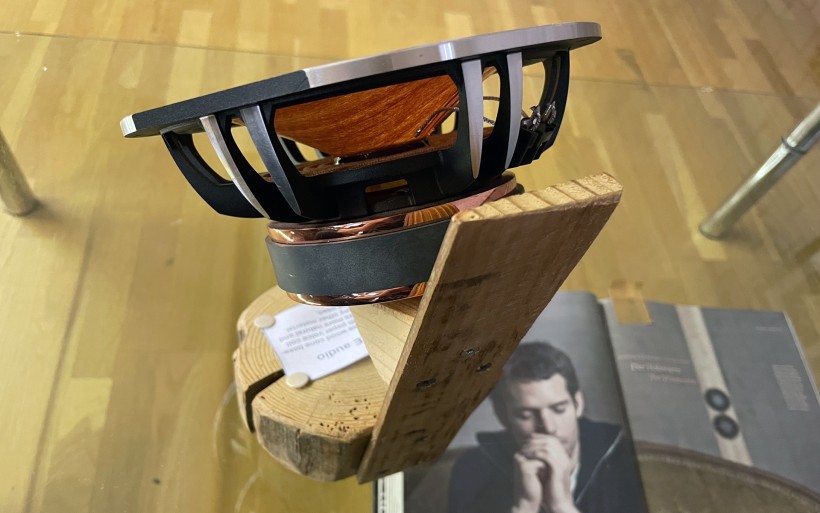
The next day Sven had a firm plan how our day was going to look like. I initially thought that we were to go to his Basel office and spend our time there. That address was in the cards indeed yet saved for later. Early morning we drove some 250 kilometers to the suburbs of Geneva to visit one audio designer whom I always wanted to meet, Serge Schmidlin of Audio Consulting. The name of his operation already says it all. The man provides consulting services for other audio houses and also is known as a boutique transformer/autoformer guru and then some. If you haven’t heard about Serge and his work, that’s how it’s supposed to be. High-tiered specialists such as him are paid subcontractors who silently support their clients with ready OEM solutions and don’t get any public credit for their input. Although that explains why Serge’s client list is top secret, suffice it to say you’d be surprised how many well-known upper-echelon brands it contains. On the contrary to Serge’s other customers, Sven is proudly open about his products being packed with Audio Consulting parts. These Swiss-made bespoke components ain’t cheap, so if I were a manufacturer, I’d be vocal about them too. Interestingly, I was about to meet Serge the designer, not the gun for hire.
The Audio Consulting roster is broad enough to assemble an entire system without looking elsewhere. It lists amps, preamps, speakers, turntables, tonearms, cartridges, cables and DACs. You won’t find many reviews of Serge’s designs in the press, however. Regular enthusiasts would consider them geeky, quirky and far out. Then again, this hardware is for folks who’ve already gone through mainstream brands and have found this realm boring. In this context Herr Schmidlin represents our hobby’s dark web, so a secretive place not many people are aware of. Even fewer enthusiasts visit it. You won’t find it unless you’re willing to dig deep and investigate what lies beyond the industry’s shiny surface. When you eventually do, then you’ll learn that Serge’s radical unorthodox products are unlike anything else on the market for reasons related purely to performance. Unsurprisingly some audio veterans no longer interested in bling find his no-compromise approach very appealing. Just a brief chat to Serge is all it takes to understand that he’s an engineer cut from a different cloth. His roster accurately reflects that.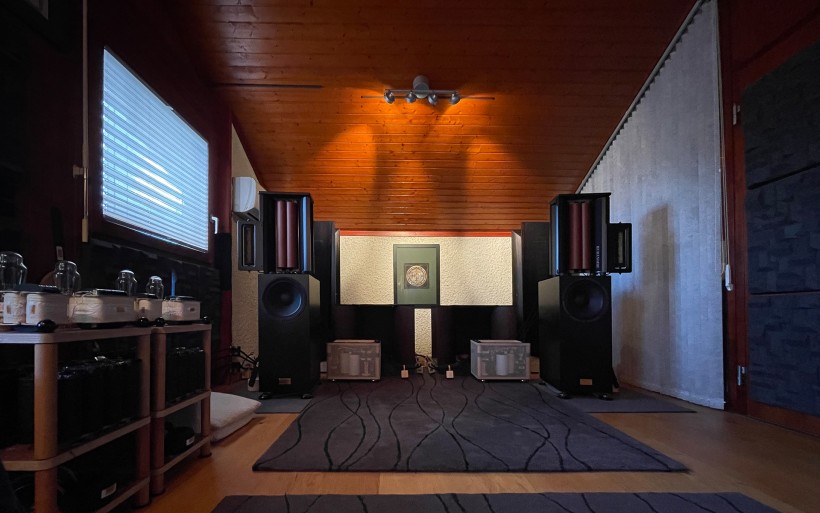 Serge greeted Sven and me in front of a nice house where he also works. Prior to going upstairs to the main listening room we had to turn off our smartphones and leave them inside a special box that prevents any aerial propagation from within. Our host sees their unwanted airborne pollution as really bad for his electronics. Then we went to a rather small cozy room on the first floor, where Serge keeps his system. Prior to moving forward let me just say that even die-hard enthusiasts would find the view inside puzzling to say the least. Really. I’d be hard-pressed to name one product that’d fit the usual profile. Let me stress that nothing in there looked regular. The speaker set on duty was Serge’s tweeter-infused Rubanoide floorstander that boasts 97dB/1w/1m efficiency, 35-20’000Hz frequency response and 8Ω impedance. This 45kg affair is built upon a transmission-line bass module designed by Sven and dipole driver based on the Linaeum transducer originally developed in 1983 by Paul Paddock and Ben Stutz, now somewhat popularized by AudioNec. Serge’s take on this unusual concept replaces plastic membranes with humidity-resistant mechanically stable paper equivalents. His highly efficient unit kicks in at 250Hz via a 12dB/oct. slope, while its large paper walls on minimalist suspensions need minimal power to move lots of air.
Serge greeted Sven and me in front of a nice house where he also works. Prior to going upstairs to the main listening room we had to turn off our smartphones and leave them inside a special box that prevents any aerial propagation from within. Our host sees their unwanted airborne pollution as really bad for his electronics. Then we went to a rather small cozy room on the first floor, where Serge keeps his system. Prior to moving forward let me just say that even die-hard enthusiasts would find the view inside puzzling to say the least. Really. I’d be hard-pressed to name one product that’d fit the usual profile. Let me stress that nothing in there looked regular. The speaker set on duty was Serge’s tweeter-infused Rubanoide floorstander that boasts 97dB/1w/1m efficiency, 35-20’000Hz frequency response and 8Ω impedance. This 45kg affair is built upon a transmission-line bass module designed by Sven and dipole driver based on the Linaeum transducer originally developed in 1983 by Paul Paddock and Ben Stutz, now somewhat popularized by AudioNec. Serge’s take on this unusual concept replaces plastic membranes with humidity-resistant mechanically stable paper equivalents. His highly efficient unit kicks in at 250Hz via a 12dB/oct. slope, while its large paper walls on minimalist suspensions need minimal power to move lots of air.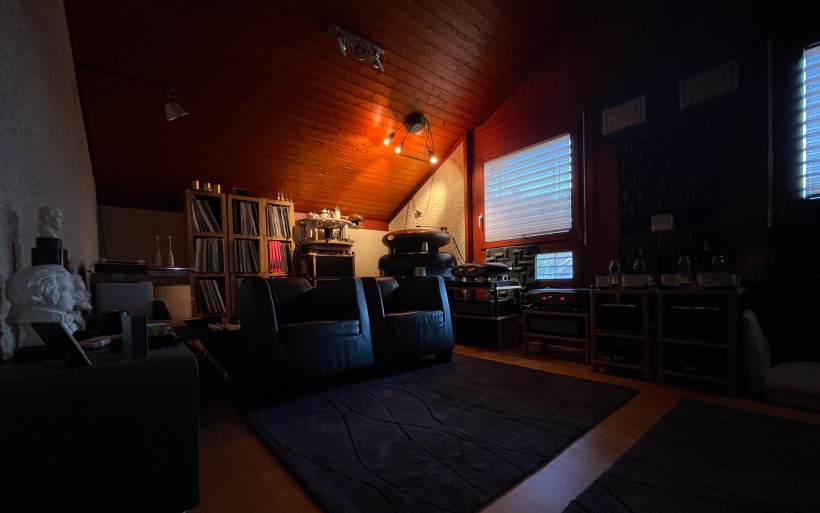 The two boxes on the floor in-between Rubanoide speakers were large enough to consider them as amps. Not the case. Their ply frames with mesh walls in fact stored crossovers. Serge built these compartments that way to have easy access should he want to make any adjustments. When I think about a speaker crossover, I instantly see a small board with a handful of components and that’s it. One look at my host’s networks sufficed to get the memo that he takes no prisoners. Each largest x-over cap shows kilograms of pure silver on the scale. Sure, you can go with something far smaller and more affordable, but in the man’s room any compromises were strictly forbidden. He wanted this space and his system to be the best versions of themselves, spared no coin to get there and looks didn’t factor. Moving on, Serge’s Meteor MIPA amp and Meteor Silver Rock phono on the job were twin-box tube designs. Their large square-shaped enclosures housed battery supplies for electronics inside their own oval wooden bodies atop HifiStay isolators. Yes, you’ve read that right. A stereo power amp that runs entirely off the grid. Now let that sink in. Prior to visiting Audio Consulting’s founder the only time I saw something somewhat similar was in 2015, when during the local AVS show Kevin Scott of Living Voice had his Vox Olympian system fueled exclusively by multiple battery packs. And lastly, Serge’s R-evolution Meteor turntable on an elaborate pneumatic suspension that makes the entire structure large, heavy and somewhere in the ballpark of CHF 250’000. I’ve seen many turntables, but nothing quite like this one.
The two boxes on the floor in-between Rubanoide speakers were large enough to consider them as amps. Not the case. Their ply frames with mesh walls in fact stored crossovers. Serge built these compartments that way to have easy access should he want to make any adjustments. When I think about a speaker crossover, I instantly see a small board with a handful of components and that’s it. One look at my host’s networks sufficed to get the memo that he takes no prisoners. Each largest x-over cap shows kilograms of pure silver on the scale. Sure, you can go with something far smaller and more affordable, but in the man’s room any compromises were strictly forbidden. He wanted this space and his system to be the best versions of themselves, spared no coin to get there and looks didn’t factor. Moving on, Serge’s Meteor MIPA amp and Meteor Silver Rock phono on the job were twin-box tube designs. Their large square-shaped enclosures housed battery supplies for electronics inside their own oval wooden bodies atop HifiStay isolators. Yes, you’ve read that right. A stereo power amp that runs entirely off the grid. Now let that sink in. Prior to visiting Audio Consulting’s founder the only time I saw something somewhat similar was in 2015, when during the local AVS show Kevin Scott of Living Voice had his Vox Olympian system fueled exclusively by multiple battery packs. And lastly, Serge’s R-evolution Meteor turntable on an elaborate pneumatic suspension that makes the entire structure large, heavy and somewhere in the ballpark of CHF 250’000. I’ve seen many turntables, but nothing quite like this one.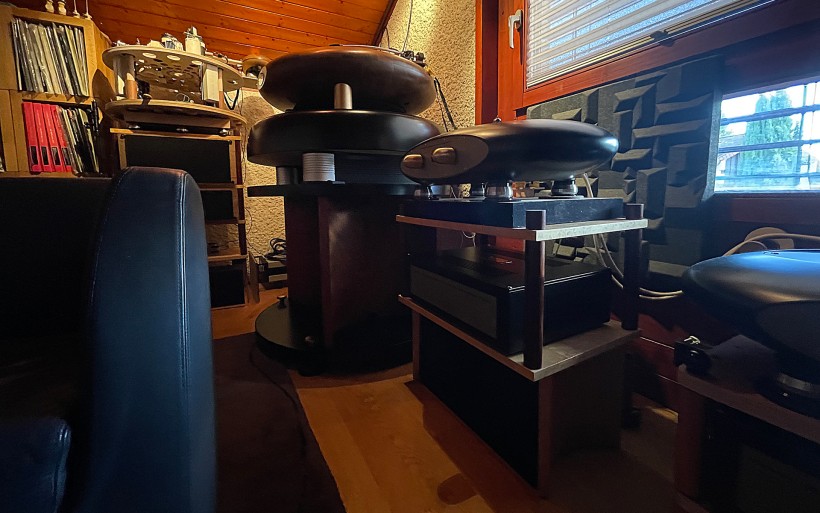 In Serge’s listening room I’ve also seen a prototype of his own 300B mono amps. Although these towers were in their skeletal not yet finished form, many key components already installed in their frames all looked like bespoke hand-made efforts. I didn’t dare asking how much a pair of these power amps is going to cost when ready, but probably a small fortune. To address that financial elephant, the Rubanoide speaker set we’ve listened to sells for CHF 87’000 before VAT and other import duties, while twin-box Meteor MIPA amp and Meteor Silver Rock phono are CHF 64’400/58’600 respectively. Prohibitively expensive Swiss manufacturing partially explains these figures and, as it quickly turned out, so does the entire system’s performance. It sounded unexpectedly good and very surprising all in all. You’d think that if a setup looks this non-standard, it has to sound weird to say the least. That wasn’t the case in the slightest.
In Serge’s listening room I’ve also seen a prototype of his own 300B mono amps. Although these towers were in their skeletal not yet finished form, many key components already installed in their frames all looked like bespoke hand-made efforts. I didn’t dare asking how much a pair of these power amps is going to cost when ready, but probably a small fortune. To address that financial elephant, the Rubanoide speaker set we’ve listened to sells for CHF 87’000 before VAT and other import duties, while twin-box Meteor MIPA amp and Meteor Silver Rock phono are CHF 64’400/58’600 respectively. Prohibitively expensive Swiss manufacturing partially explains these figures and, as it quickly turned out, so does the entire system’s performance. It sounded unexpectedly good and very surprising all in all. You’d think that if a setup looks this non-standard, it has to sound weird to say the least. That wasn’t the case in the slightest. Upon looking at Serge’s electronics, speakers and accessories working as a team I had a rough idea what I could possibly hear. High efficiency and large membranes are the recipe for sound predominantly quick, immediate, spatially open and direct. Ditto silver transformers and non-resistive volume control. Noise-killing measures and clean battery power feed grant access to cleanliness, resolution and tone, which tubes boost even further. Mix and stir everything, ideally serve cold and it should go in rather well. The reality had it somewhere in that ballpark. Serge’s setup was clearly groomed for speed and instant response to signal, which secured high-tiered effortlessness, off-the-charts momentum and very exciting snappy MO overall. It also brimmed with easy details to act like a magnifying glass that had tiniest nuances and dust bits under its scope. In spite of this adrenaline-infused firmly outlined informative drive, the effect was admirably smooth and not shy on tone, heft and color. Our host is very much into older recordings and fancies vinyl, so his vocabulary doesn’t allow for anything that’s even remotely close to dry or skinny. The man’s system sounded very much alive and hydrated, which was quite the accomplishment considering its main sonic angle comprised of spatial presence, precisely served sound sources, high oxygenation and top shelf articulation. It also sported lovely downstairs; controlled, quick, impactful, optically large, tactile, spot on stiff and free from any drag. I’d associate this behavior with a closed box rather than transmission line. More importantly, when that kind of bass meets suchness and bite as described, blur is left at the door and the sensation of high momentum and impact is constantly on. All things considered, I’d file Serge’s setup as meticulously curated, thoroughly sorted all across the board and free from any obvious weaknesses. It was apparent that he’d invested a lot of time to have it tuned that way, so color me very impressed.
Upon looking at Serge’s electronics, speakers and accessories working as a team I had a rough idea what I could possibly hear. High efficiency and large membranes are the recipe for sound predominantly quick, immediate, spatially open and direct. Ditto silver transformers and non-resistive volume control. Noise-killing measures and clean battery power feed grant access to cleanliness, resolution and tone, which tubes boost even further. Mix and stir everything, ideally serve cold and it should go in rather well. The reality had it somewhere in that ballpark. Serge’s setup was clearly groomed for speed and instant response to signal, which secured high-tiered effortlessness, off-the-charts momentum and very exciting snappy MO overall. It also brimmed with easy details to act like a magnifying glass that had tiniest nuances and dust bits under its scope. In spite of this adrenaline-infused firmly outlined informative drive, the effect was admirably smooth and not shy on tone, heft and color. Our host is very much into older recordings and fancies vinyl, so his vocabulary doesn’t allow for anything that’s even remotely close to dry or skinny. The man’s system sounded very much alive and hydrated, which was quite the accomplishment considering its main sonic angle comprised of spatial presence, precisely served sound sources, high oxygenation and top shelf articulation. It also sported lovely downstairs; controlled, quick, impactful, optically large, tactile, spot on stiff and free from any drag. I’d associate this behavior with a closed box rather than transmission line. More importantly, when that kind of bass meets suchness and bite as described, blur is left at the door and the sensation of high momentum and impact is constantly on. All things considered, I’d file Serge’s setup as meticulously curated, thoroughly sorted all across the board and free from any obvious weaknesses. It was apparent that he’d invested a lot of time to have it tuned that way, so color me very impressed.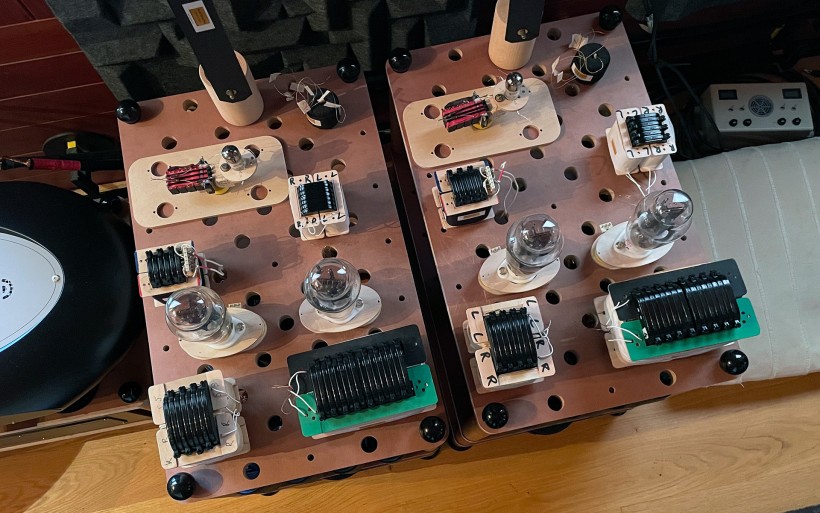
After spending several hours with Serge it was time to head back to Basel. The Boenicke Audio HQ located at Ramsteinerstrasse 17 just near the Ren river was our next and final stop. Upon arrival Sven showed me the small basement where he keeps parts to assemble electronic products and personally builds each. The separate entrance several meters away led to the 135m2 area that was the man’s listening room. Half this space was occupied by his friend who runs a printing agency. The place was more than enough for them both and, as I was about to find out, acoustically friendly even without any diffusers or absorbers anywhere in sight. The view in front of a large couch comprised a massive wooden partially open block used as a rack for Boenicke’s electronics. On duty was his top shelf stuff; v3 preamp, p3 power amp and two upcoming products; c2 DAC and Sublime Voltage Conditioner aka SVC. Add to that Metronome DSS 2 streamer, multiple Boenicke cables and accessories and presto. That’s what I was about to experience. A vintage Sony transport heavily modified by Volker Bajorat of Clockwork Audio also sat on the same rack. Sven relies on this CD player during various audio shows, so I thought that this was his weapon of choice for the evening. It wasn’t. He wanted us to listen to music I like and am daily exposed to at my own place, so streaming was on the menu.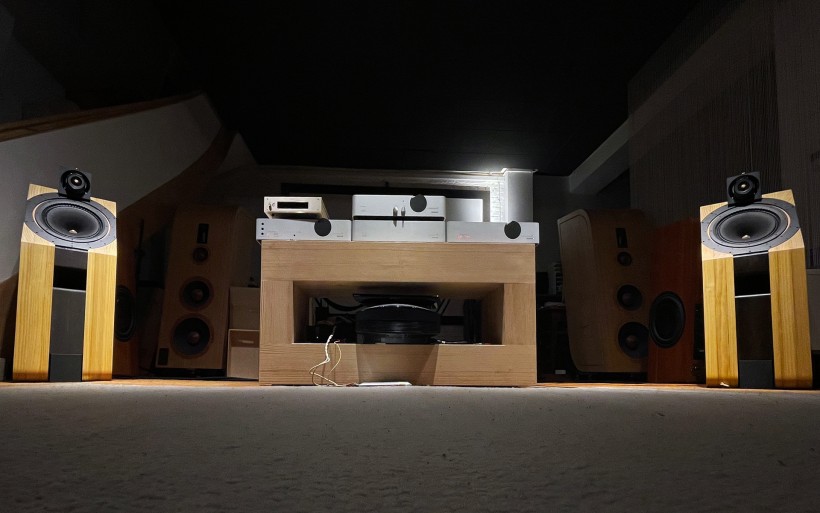 The star of the show was Sven’s latest W22 floorstander. The list of unique goodies it packs is rather long. Accoya or Mahogany solid-wood enclosure can accommodate customer-selectable solid wood side panels on proprietary Swing Base flotation. AER cone tweeter custom-made specifically for W22 boasts 101dB@2.83 V/m sensitivity, ultra-linear response, powder-coated bell-bronze curved baffle, paper voice coil former, aluminium-alloy voice coil wire, double C37 lacquered foam-surrounded carbon membrane and bell-bronze phase plug. Harmonix RF 5700 tuning dots are applied on magnet and speaker terminals. Audax tweeter on the rear baffle boosts ambience. Custom-made Supravox 285 midwoofer runs without any filtering so acts like a full-ranger. It features bell-bronze phase plug, C37 lacquered cellulose diaphragm, paper former and aluminium voice coil, both also coated with C37 lacquer. The AER and Supravox rely on a proprietary friction-free suspension and see Boenicke’s latest-gen double series and single parallel resonators. Speaker terminals are Furutech FT-816 posts. The W22’s Internals feature Lessloss coaxial C-MARC hookup wiring, Duelund Tinned Copper Pio Cast capacitor and Audio Consulting custom-made bypass cap for the tweeter. On top of that this speaker set also has in-built Steinmusic Speaker Match Signature bullets, Sven’s ComDev devices and his own acoustical phase linearization networks. Each W22 also houses two latest-gen Bybee Quantum filters and 16 (!!!) LessLoss Firewall filters. Should you wish to know the price of this product, you may want to ask its maker as that’s between him and paying customers. That sticker also covers worldwide shipping and setting up by Sven himself.
The star of the show was Sven’s latest W22 floorstander. The list of unique goodies it packs is rather long. Accoya or Mahogany solid-wood enclosure can accommodate customer-selectable solid wood side panels on proprietary Swing Base flotation. AER cone tweeter custom-made specifically for W22 boasts 101dB@2.83 V/m sensitivity, ultra-linear response, powder-coated bell-bronze curved baffle, paper voice coil former, aluminium-alloy voice coil wire, double C37 lacquered foam-surrounded carbon membrane and bell-bronze phase plug. Harmonix RF 5700 tuning dots are applied on magnet and speaker terminals. Audax tweeter on the rear baffle boosts ambience. Custom-made Supravox 285 midwoofer runs without any filtering so acts like a full-ranger. It features bell-bronze phase plug, C37 lacquered cellulose diaphragm, paper former and aluminium voice coil, both also coated with C37 lacquer. The AER and Supravox rely on a proprietary friction-free suspension and see Boenicke’s latest-gen double series and single parallel resonators. Speaker terminals are Furutech FT-816 posts. The W22’s Internals feature Lessloss coaxial C-MARC hookup wiring, Duelund Tinned Copper Pio Cast capacitor and Audio Consulting custom-made bypass cap for the tweeter. On top of that this speaker set also has in-built Steinmusic Speaker Match Signature bullets, Sven’s ComDev devices and his own acoustical phase linearization networks. Each W22 also houses two latest-gen Bybee Quantum filters and 16 (!!!) LessLoss Firewall filters. Should you wish to know the price of this product, you may want to ask its maker as that’s between him and paying customers. That sticker also covers worldwide shipping and setting up by Sven himself.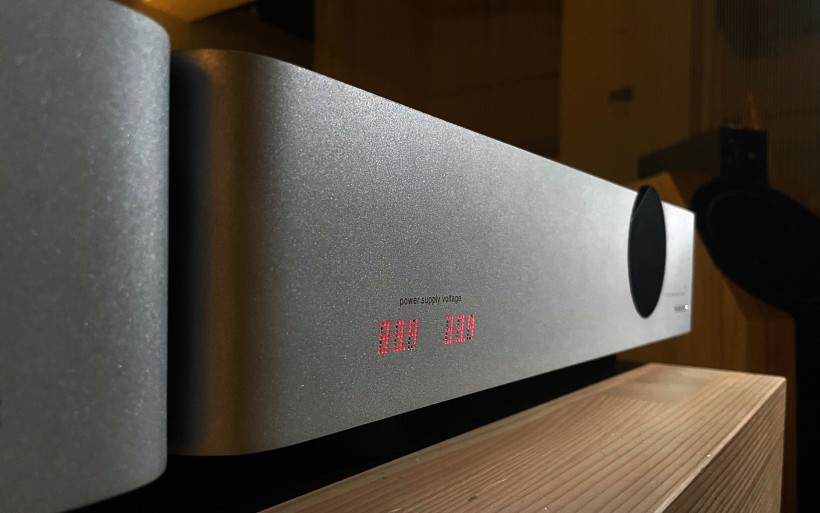 Although it was rather late and we had about three hours before calling it a day, this was enough time to map the W22’s behavior as its maker intended. Several months earlier in Munich I’d already heard its semi-active sealed version. Infused with dual 15-inch force-cancelling woofers and 600W class D amp for them per channel, it had this artillery DSP-aligned exactly one cycle behind Supravox neighbors. The W22 in Basel however was the fully passive vented prototype that still reached down to 30Hz without any bass assistance, so sufficiently low for any music that doesn’t incorporate deep synth bass pulses. Moving on, a speaker set is as good as a listening room allows it to be. Hours earlier at Serge’s place we were exposed to a wholly impressive setup in a fairly small space with triangular ceiling. The area Sven had at his disposal was way larger and that alone made a tremendous difference. The distance between each W22 to the front wall was good six meters, the base was far wider and uniformly flat ceiling noticeably higher. About three meters or so divided the couch and both speakers.
Although it was rather late and we had about three hours before calling it a day, this was enough time to map the W22’s behavior as its maker intended. Several months earlier in Munich I’d already heard its semi-active sealed version. Infused with dual 15-inch force-cancelling woofers and 600W class D amp for them per channel, it had this artillery DSP-aligned exactly one cycle behind Supravox neighbors. The W22 in Basel however was the fully passive vented prototype that still reached down to 30Hz without any bass assistance, so sufficiently low for any music that doesn’t incorporate deep synth bass pulses. Moving on, a speaker set is as good as a listening room allows it to be. Hours earlier at Serge’s place we were exposed to a wholly impressive setup in a fairly small space with triangular ceiling. The area Sven had at his disposal was way larger and that alone made a tremendous difference. The distance between each W22 to the front wall was good six meters, the base was far wider and uniformly flat ceiling noticeably higher. About three meters or so divided the couch and both speakers.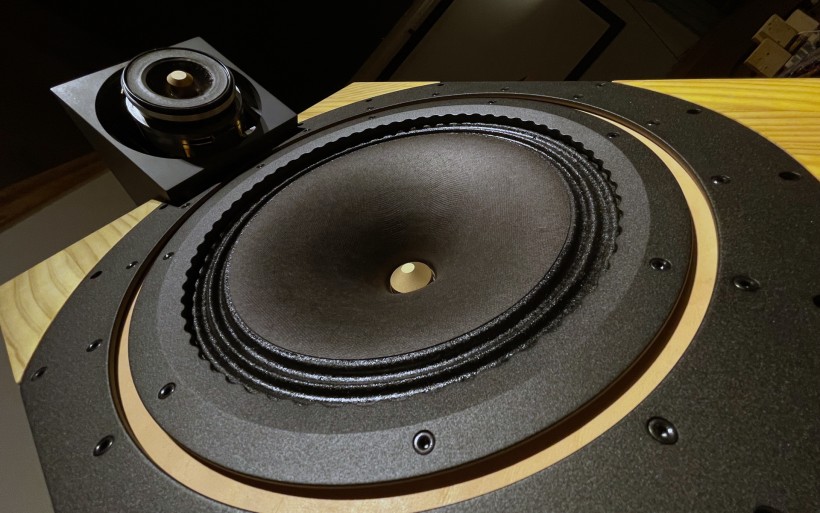 All Boenicke speaker sets, no matter how big or small, turn into imaging fiends when there’s lots of space around them. Unsurprisingly at Sven’s place the W22 prototype staged like a monster, as if it had no clue where to put boundaries on landscapes it portrayed. In that sense it seemed quite endless. Then again, if you put such a speaker set this far away from the front wall, you can expect spatial depth layered and developed so well that you can literally drown in it. So I drowned time and time again, just to be rescued by pinpoint accurate first plan busy with perfectly outlined utmost readable large sound sources, courtesy of full-range transducers’ embedded assets of course. To put that into a perspective, Serge’s system was enjoyably forward, direct and with the closest virtual shapes presented just in front to have my attention mainly there. On that score Sven’s setup was tuned to maintain the balance between sheer spaciousness, impact and intimacy, while music dictated their ratio. Serge’s voicing leaned towards radiance and outlines, while Sven’s branched out more into mystery and generous tone atop gargantuan spatial landscapes unlocked by his large listening room. The key difference between these platforms thus narrowed down to outlines, richness and perspective. Think watercolor among hard-pressed frames for that extra contrast pop and the sensation of here, versus softer pencil swings filled with crayons to land a more picturesque color-intense effect aka there. That’s the gist.
All Boenicke speaker sets, no matter how big or small, turn into imaging fiends when there’s lots of space around them. Unsurprisingly at Sven’s place the W22 prototype staged like a monster, as if it had no clue where to put boundaries on landscapes it portrayed. In that sense it seemed quite endless. Then again, if you put such a speaker set this far away from the front wall, you can expect spatial depth layered and developed so well that you can literally drown in it. So I drowned time and time again, just to be rescued by pinpoint accurate first plan busy with perfectly outlined utmost readable large sound sources, courtesy of full-range transducers’ embedded assets of course. To put that into a perspective, Serge’s system was enjoyably forward, direct and with the closest virtual shapes presented just in front to have my attention mainly there. On that score Sven’s setup was tuned to maintain the balance between sheer spaciousness, impact and intimacy, while music dictated their ratio. Serge’s voicing leaned towards radiance and outlines, while Sven’s branched out more into mystery and generous tone atop gargantuan spatial landscapes unlocked by his large listening room. The key difference between these platforms thus narrowed down to outlines, richness and perspective. Think watercolor among hard-pressed frames for that extra contrast pop and the sensation of here, versus softer pencil swings filled with crayons to land a more picturesque color-intense effect aka there. That’s the gist.
A vented prototype or not, the W22 also introduced itself as snappy vigorous performer, highly gifted on landing large powerful perfectly controlled bass blows without any hiccups and port sound at all. In most rooms including my own I always detect some such issues, but at Sven’s I haven’t heard any. Although sensibly denser than Serge’s, the Basel set also was as free from spatial confusion and temporal blur. This is a highly punctual, precise, articulated and orderly setup at its core, just voiced to communicate these virtues as much as assets related to substance, heft and prettiness in music. The Boenicke system was highly exciting, but its maker’s method of choice to manifest that was built upon a particularly fetching inviting atmosphere rather than immediacy. Wild drum solos on Serge’s platform were quite unbeatable. Sven’s rig had me sold during listening to Wardruna and Heilung’s tracks in high demand of spatial might, mood and ambience. Chalk and cheese. For what it’s worth, I wouldn’t change a single thing in these systems. They’re awesome as is.
And that’s a wrap. My sincere thanks to Sven and Serge for hospitality, you’ve been fantastic hosts!
Boenicke Audio
Audio Consulting


